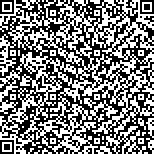| 引用本文: | 洪晨飞,崔正国,白莹,江涛,胡清静,周明莹,李玉,曲克明.莱州湾荧光溶解有机物的时空分布[J].海洋科学,2022,46(6):15-31. |
| |
|
| |
|
|
| 本文已被:浏览 751次 下载 1506次 |

码上扫一扫! |
|
|
| 莱州湾荧光溶解有机物的时空分布 |
|
洪晨飞1,2, 崔正国2,3, 白莹2,3, 江涛2, 胡清静2,3, 周明莹2, 李玉1, 曲克明2,3
|
|
1.江苏海洋大学海洋技术与测绘学院, 江苏 连云港 222005;2.中国水产科学研究院黄海水产研究所 农业农村部海洋渔业可持续发展重点实验室, 山东 青岛 266071;3.青岛海洋科学与技术试点国家实验室 海洋渔业科学与食物产出过程功能实验室, 山东 青岛 266071
|
|
| 摘要: |
| 利用三维荧光光谱-平行因子分析法(EEMs-PARAFAC)技术结合多元统计方法研究了莱州湾海域春季(2020年5月)和秋季(2020年10月)荧光溶解有机物(FDOM)的来源及时空分布特征。结果显示莱州湾海域FDOM由2类共4个荧光组分组成:C1、C4为类蛋白质组分,分别为色氨酸和酪氨酸;C2、C3为类腐殖质组分。并对各组分的来源及分布特征分析:春季FDOM分布主要受到陆源输入的影响,其中表层C1、C2、C3也受微生物活动影响。秋季表层C1、C2、C3分布受到陆源输入和浮游植物生产共同影响,秋季表层C4主要受生物现场生产影响,秋季底层C1、C2、C3主要受陆源输入影响,C4受陆源输入和浮游植物生产共同影响。各荧光组分在表层的季节性差异主要是由于春季部分FDOM经陆源输入后受偏南风作用,在莱州湾西部及南部海域扩散。FDOM在底层的季节性差异主要由于受到沉积物再悬浮的影响。HIX高值分布表明莱州湾西部和南部FDOM受陆源输入影响显著,BIX高值分布表明莱州湾远海FDOM受生物活动影响程度较高。总体上,陆源输入影响莱州湾FDOM分布的主要因素。 |
| 关键词: 荧光溶解有机物 三维荧光光谱-平行因子分析法 莱州湾 |
| DOI:10.11759/hykx20210801001 |
| 分类号:X144 |
| 基金项目:山东省重大科技创新工程专项课题(2018SDKJ0503-1);国家自然科学基金青年基金(41906129);江苏省自然科学基金面上项目(BK20171262);山东省自然科学基金博士基金(ZR2019BD004) |
|
| Spatial and temporal distribution of fluorescent dissolved organic matter in Laizhou Bay |
|
HONG Chen-fei1,2, CUI Zheng-guo2,3, BAI Ying2,3, JIANG Tao2, HU Qing-jing2,3, ZHOU Ming-ying2, LI Yu1, QU Ke-ming2,3
|
|
1.School of Ocean Technology and Surveying and Mapping, Jiangsu Ocean University, Lianyungang 222005 China;2.Key Laboratory of Sustainable Development of Marine Fisheries, Ministry of Agriculture and Rural Affairs, Yellow Sea Fisheries Research Institute, Chinese Academy of Fishery Sciences, Qingdao 266071 China;3.Pilot National Laboratory for Marine Science and Technology (Qingdao), Laboratory for Marine Fisheries Science and Food Production Processes, Qingdao 266237, China
|
| Abstract: |
| The source and spatial distribution characteristics of fluorescent dissolved organic matter (FDOM) in the Laizhou Bay were studied using excitation and emission matrix spectroscopy and parallel factor analysis (EEMs-PARAFAC) in the spring (May 2020) and autumn (October 2020). According to the results, the FDOM in Laizhou Bay is composed of two types of four fluorescent components: C1 and C4 are protein-like components, tryptophan and tyrosine, respectively; C2 and C3 are terrestrial humus components. Each component's source and distribution are analyzed: The distribution of FDOM in the spring is mainly affected by terrestrial input, with microbial organic matter preprocessing also influencing the surface layer C1, C2, and C3. In the fall, the distribution of C1, C2, and C3 in the surface layer in the autumn is affected by both terrestrial input and phytoplankton production, whereas C4 is affected mainly by onsite biological production. Terrestrial input has the greatest impact on C1, C2, and C3 of the bottom layer in autumn, whereas phytoplankton production has an impact on C4. The seasonal differences in the various fluorescent components in the surface layer are mainly due to the fact that in spring, after being imported from land sources, a portion of the FDOM is affected by the southerly wind and spreads into the western and southern waters of the Laizhou Bay. The influence of sediment resuspension is mostly responsible for the seasonal difference in FDOM in the bottom layer. The distribution of high HIX values indicates that terrestrial input has a large impact on FDOM in the western and southern parts of Laizhou Bay, whereas the distribution of high BIX values indicates that biological activities have a large impact on FDOM in the open sea of Laizhou Bay. The main factor affecting the distribution of FDOM in Laizhou Bay is land-based input by biological activities. |
| Key words: fluorescent dissolved organic matter excitation and emission matrix spectroscopy and parallel factor analysis Laizhou Bay |
|
|
|
|
|
|
